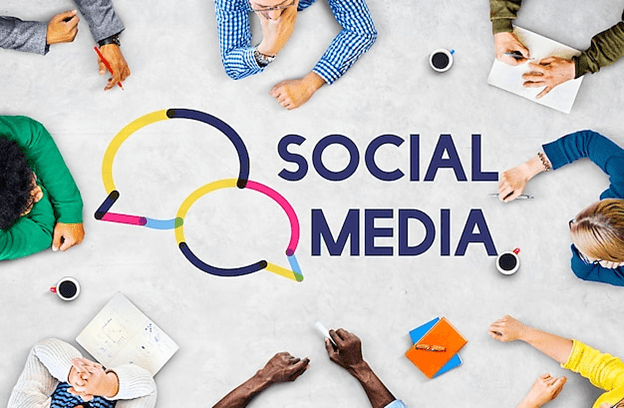Business-to-consumer (B2C) marketing is very different from business-to-business (B2B) marketing. Marketing for businesses and consumers uses varied audiences, communication channels, strategies, and tactics.
By focusing on the desires, requirements, and challenges of those who make purchases on behalf of or for their organisation, B2B marketing transforms the corporation into the client (rather than for themselves).
Here are a few examples of B2B companies:
A coworking space that leases office spaces to remote teams and freelancers (like Spaces)
An on-demand order fulfilment, warehousing, and screen printing service (like Printful)
A provider of marketing software that provides lead generation software, social media management tools, and other marketing solutions to companies and organisations
B2C marketing focuses on the needs, interests, and challenges of specific consumers who are making the purchase on their behalf or for themselves, i.e., the client. Here are a few instances of B2C businesses:
An e-commerce company that sells office supplies to remote or self-employed individuals (like Poppin)
A store that sells t-shirts and other clothing and accessories (like Target)
A music platform that sells streaming subscriptions (like Spotify)
Take a look at this chart comparing B2B and B2C customers.
| For b2b marketing | For b2c marketing | |
|---|---|---|
| Goal | Customers are focused on ROI, efficiency, and expertise. | Customers are seeking deals and entertainment (which means marketing needs to be more fun). |
| Purchase Motivation | Customers are driven by logic and financial incentive | Customers are driven by emotion. |
| Drivers | Customers want to be educated (which is where B2B content marketing comes in). | Customers appreciate education but don’t always need it to make a purchase decision. |
| Purchase Process | Customers like (if do not prefer) to work with account managers and salespeople. | Customers like to make purchases directly. |
| People Involved in Purchase | Customers often have to confer with decision-makers and other members of their chain of command before making a purchase decision. | Customers rarely need to confer with others before making a purchase decision. |
| Purchase Purpose | Customers make purchases for long-term solutions, resulting in a longer sales cycle, longer contracts, and longer relationships with companies. | Customers aren’t necessarily looking for long-term solutions or long-term relationships. |
Despite their distinctions, B2B and B2C do interact at numerous points. In addition to offering office supplies to freelancers and remote workers, Poppin also designs corporate workspaces and branded products.
On the other hand, Printful not only offers order fulfilment and storage to businesses but also satisfies consumer requests for e-commerce printing.

B2B Content Marketing
We've talked about how B2B customers are informed, sensible, and eager to learn. For reaching these objectives, B2B content marketing is the finest marketing strategy.
Compared to a traditional PR marketing strategy, which interrupts a consumer's daily activities with promotional material, content marketing delivers the consumer useful information and informs them, which is exactly what B2B clients are looking for. Additionally, content marketing supports SEO initiatives, which involve anticipating your audience's search terms, directing them to your website and content, and potentially converting them into customers.
It's important to keep in mind that content marketing is most effective when your materials are matched to various stages of the buyer's journey. According to Jonathan Franchell, CEO and Founder of Ironpaper, effective content in the awareness phase informs the customer about their pain issues.
"A frequent error made by B2B organisations is not educating the customer about their brand, offering, or business. The consumer is not prepared because they are only now beginning to understand their problem."
Franchell adds: "B2B companies should examine their content as well. Try out a reward and play around with various material formats, like webinars, eBooks, and videos. Recognize and quantify the informational formats that are appealing to the right kind of customers."
B2B Marketing Trends to Watch in 2023 [New Data]
The SureTaas Blog team researched what the majority of B2B marketers would focus on in 2023 in terms of concerns, opportunities, and initiatives.
So let's get going.
1. Generating leads and traffic is the top challenge for marketers.
Rising traffic will be everyone's primary concern in the future year. In our 2023 Industry Trends Report, marketers identified acquiring leads and visitors as their #1 challenge. The next two responses were improving their marketing approach and hiring talent.
It makes sense that 17% of marketers are concerned about altering their marketing strategy in light of the impending changes and the potential for a recession. Marketers will undoubtedly have their hands busy in 2023 as a result of increased competition and financial constraints.
2. Marketers anticipate struggling to keep up with trends in 2023.
It makes sense that keeping up with trends will be a big problem for marketers in 2023 given how frequently marketing trends change.
The following were the top five worries for marketers shortly: increased competition; using CRM systems; and having to alter the marketing approach.
3. Social media marketers report 'creating engaging content' will be their number one challenge in 2023.
According to 22% of social media marketers, creating captivating content is the largest challenge they expect to face in 2023.
Since practically every company using social media is vying for customers' attention, competition is severe. Businesses have been compelled to evaluate what makes them stand out from the competition and how they might target and engage prospects more successfully. We'll look at a few of the forms that marketers have used to make their greatest work stand out in the next section.
4. Marketers leverage video the most.
Video is the most popular format for marketing, with 50% of marketers opting for it. Images were used by 47% of marketers, placing them in second place.
The video also had the highest return on investment when compared to other formats including images, blog posts, podcasts, and case studies.
Its popularity is not expected to diminish any time soon. Video is expected to become more popular among new users, with 1 in 3 wanting to use this format in 2023.
5. Influencer marketing was the trend leveraged most this year.
Consumer behaviour has significantly changed as a result of the epidemic, with the majority of people now purchasing online and, specifically, making purchases directly on social media.
Therefore, it makes sense that B2B marketers would want to use influencer agreements to ensure that their products or services showed on social media networks.
Influencer marketing is anticipated to increase to a 13.8 billion dollar industry by the end of this year, and it isn't anticipated to slow off.
Given that this industry would likely continue to grow in 2023, 71% of B2B marketers planned to boost their spending on influencer marketing this year.
However, you need to pick your partners wisely. Even though it can be tempting to go for influencers with huge followings, many organisations have found more success with micro-influencers. Therefore, make sure to do your homework to determine which influencers have the most genuine connections with your target audience.
6. Facebook leads in ROI, but other platforms are gaining popularity.
In addition to being the most widely used marketing platform, Facebook also provided the best return on investment for marketers, according to our 2023 Trends Report. TikTok and YouTube tied for the most marketers' expected investments, with 16% saying Facebook.
Spending on other websites is rising even though Facebook has the highest ROI. The biggest increase is expected in 2023, according to marketers who use YouTube, which presently accounts for 91% of its users.
It could be easier to calculate ROI for some activities than others. It is straightforward to calculate the ROI of a social media advertising campaign, for example, by tracking purchases that were made as a result of a Facebook advertisement. A sale is a quantifiable outcome, and Facebook's Ad Manager makes it easy to track your return on investment.
However, it could be more difficult to keep track of other acts. For instance, figuring out which blog entries or social media posts brought in money can be a difficult and time-consuming task.
To solve this problem, see How to Calculate ROI in Marketing.
Consider A/B testing various marketing campaigns and calculating ROI to determine which platforms frequently offer the biggest ROI for your business. For instance, Facebook frequently provides the best return on investment for marketers, but this may change depending on the needs of your brand or business.
7. The number one goal for marketers in 2023 is increasing revenue.
To create a successful marketing strategy for 2023, it's crucial to understand your long-term goals, therefore it might be helpful to learn what other B2B marketers intend to prioritise in that year.
Increasing revenue and sales is the top goal for B2B marketers going forward, bumping brand recognition up to the third spot from the previous year.
Top marketing goals:
Increase revenue
Improve customer experience
Increase brand awareness
Increase engagement
Improve brand loyalty
About 50% of B2B marketers stated that "raising brand awareness" was their top goal for 2022.
Consumer brand awareness is necessary for developing trust, enduring loyalty, and brand equity. It is understandable why so many marketers think it is crucial for long-term success.
Brands will prioritise data gathering, according to Sangram Vajre, the Chief Evangelist of Terminus.
As he puts it "The effectiveness of our campaigns and efforts will be increasingly important in determining our capacity to generate innovatively, focused, and flexible marketing approaches. Because CMOs are being held more and more accountable for ROI metrics, we must act now."
Consider how you can manage your data in a more efficient, long-lasting way by reading Everything You Need to Know About Data Management.
If you're interested in audience tracking without using third-party cookies, you should also read 7 Marketing Alternatives to Tracking Cookies.
8. This year marketers stopped leveraging podcasts and audio content, while others stopped implementing VR and AR.
It's important to understand what marketers plan to do, but it's equally important to understand what they do not plan to do. You may use this to decide your guardrails and make sure you're adhering to them to prevent wasting time and resources on unproductive marketing strategies.
According to research on the SureTaas blog, 25% of marketers plan to quit utilising podcasts and audio material, closely followed by 23% of marketers who want to stop using VR and AR.
The fact that some poll respondents believed each of these projects wasn't worth the time, effort, and resources required doesn't mean that these actions are wasteful. In the end, it comes down to what your audience prefers.
Consider your investment in these projects again if your target audience doesn't like listening to podcasts or other audio formats for business material.
Even if audio content isn't going anywhere, if you haven't already, you should consider experimenting with other audio formats in 2023 to see how they affect your audience. Check out Clubhouse vs. Podcasts: Which Should Marketers Use or Everything You Need to Know About Starting a Podcast if you're not sure where to start.
9. Philanthropy is best when it's genuine.
Content marketer Carla Andre-Brown from Jailbird remarked to me: "Initiatives aimed at establishing brands should work with social and environmental issues in a way that promotes recognition for both parties. Marketers must be very careful about how they present their company to prevent coming seen as unreliable."







